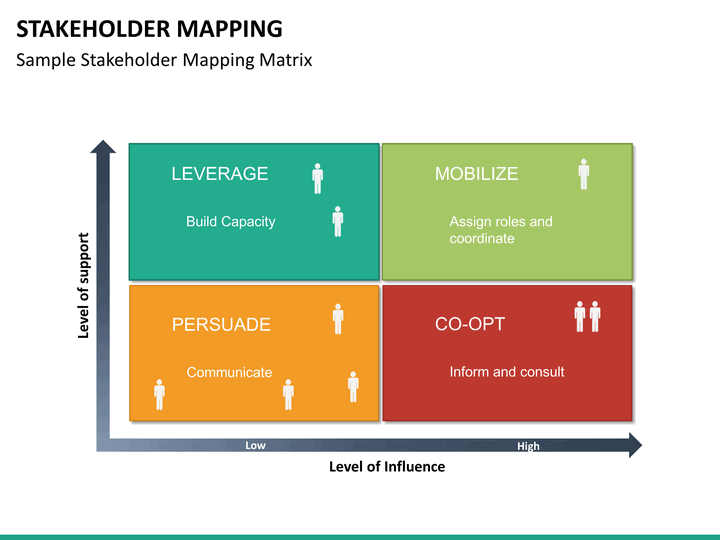How to organise stakeholder mapping
Stakeholder mapping is creating a map that shows all the participants in the process and their roles. The map allows you to visualise all the people involved in the project. This tool helps to see the whole picture and analyse the participants’ interrelationships and contributions.
The map can take the form of a diagram or a chart. The most common use of this approach is to:
- Better manage stakeholder expectations. This will help create a product that meets their needs;
- Develop an effective stakeholder communication strategy. The map helps organise project stakeholders into groups based on common characteristics. You need to choose a different interaction style for each group and identify appropriate communication channels.
- Identify the focus of the team’s activities. The tool provides an understanding of who is involved in the process and how, as well as the role of each participant in achieving the outcome.
- Test hypotheses. The map allows for assigning a specific hypothesis to a specific category of stakeholders to make testing as efficient as possible.
In general, it is possible to consider mapping as one of the tools to improve project management. It highlights the important points to focus on first.

Characteristics of development
There are no clear rules for creating a map. Everything depends on the characteristics of the project and its participants. This tool is very flexible and easy to adapt to the job. If we look at a classic map, it contains four components:
- product;
- users;
- direct stakeholders;
- indirect stakeholders.
Direct stakeholders directly influence users and their experience of interacting with the product. Indirect stakeholders do not have an active role in the process. However, they can affect the chains within the map.
When mapping, it is important to consider all the details and describe the interactions. A successful solution in this case is to involve the whole team in creating the map. This approach ensures that as many ideas as possible are generated. With their help, it is possible to expand the stakeholder groups significantly. It is also essential to describe each product in detail and to specify the categories.
The map is a flexible tool that can and should be added to and adapted regularly. There are several mapping tools available. They may differ in functionality and interface, but each is effective. The simplest form of mapping is a table. Columns can contain information on stakeholder contacts, interests, and project priorities. Again, there are no clear parameters; the number of columns and their information can be unlimited. The main goal is to create a valuable tool for managing project processes.




